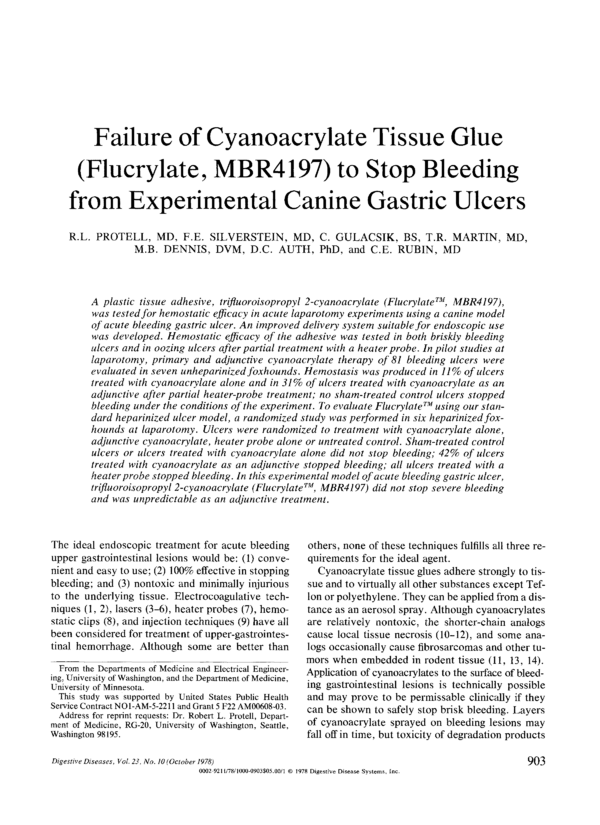Failure of Cyanoacrylate Tissue Glue (Flucrylate, MBR4197) to Stop Bleeding from Experimental Canine Gastric Ulcers
Failure of Cyanoacrylate Tissue Glue (Flucrylate, MBR4197) to Stop Bleeding from Experimental Canine Gastric Ulcers
A plastic tissue adhesive, trifluoroisopropyl 2-cyanoacrylate (FlucrylateTM, MBR4197), was tested for hemostatic efficacy in acute laparotomy experiments using a canine model of acute bleeding gastric ulcer. An improved delivery system suitable for endoscopic use was developed. Hemostatic efficacy of the adhesive was tested in both briskly bleeding ulcers and in oozing ulcers after partial treatment with a heater probe. In pilot studies at laparotomy, primary and adjunctive cyanoacrylate therapy of 81 bleeding ulcers were evaluated in seven unheparinized foxhounds. Hemostasis was produced in 11% of ulcers treated with cyanoacrylate alone and in 31% of ulcers treated with cyanoacrylate as an adjunctive after partial heater-probe treatment; no sham-treated control ulcers stopped bleeding under the conditions of the experiment. To evaluate FlucrylateTM using our standard heparinized ulcer model, a randomized study was performed in six heparinized foxhounds at laparotomy. Ulcers were randomized to treatment with cyanoacrylate alone, adjunctive cyanoacrylate, heater probe alone or untreated control. Sham-treated control ulcers or ulcers treated with cyanoacrylate alone did not stop bleeding; 42% of ulcers treated with cyanoacrylate as an adjunctive stopped bleeding; all ulcers treated with a heater probe stopped bleeding. In this experimental model of acute bleeding gastric ulcer, trifluoroisopropyl 2-cyanoacrylate (FlucrylateTM, MBR4197) did not stop severe bleeding and was unpredictable as an adjunctive treatment.
- Log in to post comments

